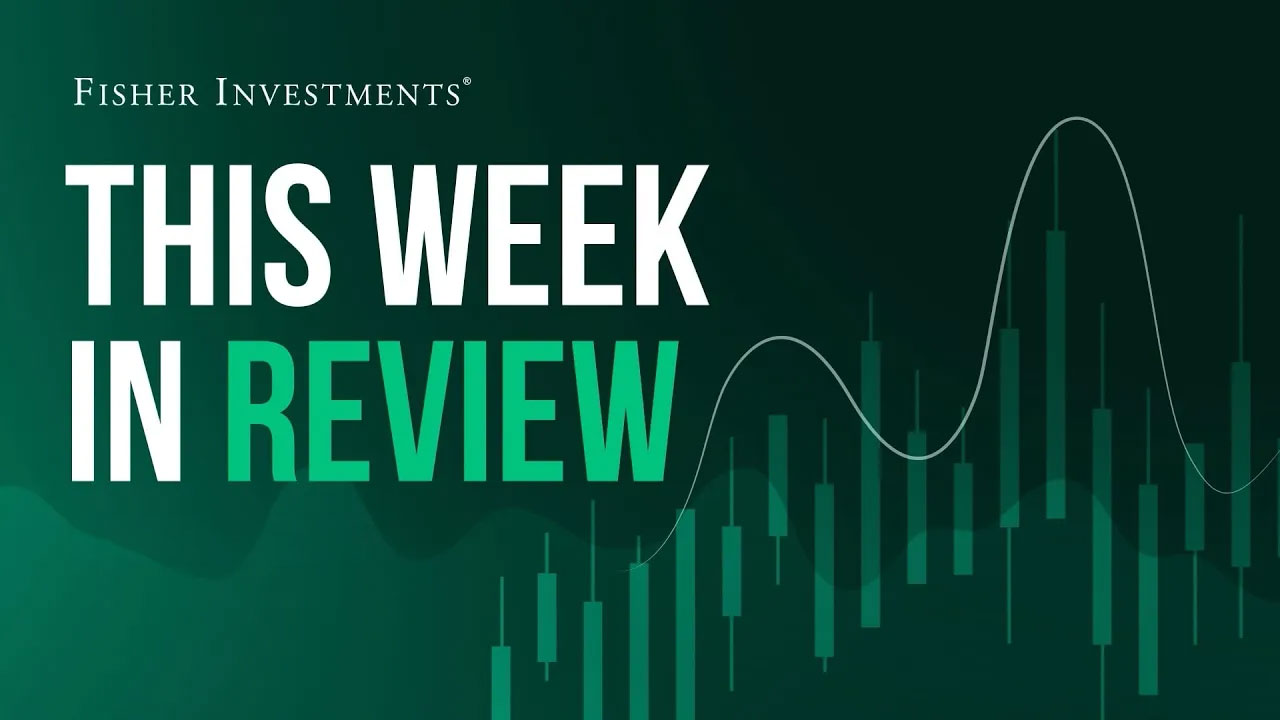Personal Wealth Management / Economics
Digging Into US GDP at 2024’s Close
Main thrust points to further growth, supporting markets.
Q4 GDP closed out 2024 with 2.3% annualized growth, bringing the full year to 2.8%.[i] This shows the economy chugging along steadily from 2023’s 2.9% and 2022’s 2.5%—when many braced for recession. Reality, it turns out, was better than expected, underpinning the bull market since then. Now, a month into Q1 2025, last quarter’s GDP doesn’t carry much weight for forward-looking markets. But under the hood, there are a few insights we think investors can glean.
First, consumer spending is robust. As Exhibit 1 shows, personal consumption expenditures (PCE, dark green bar) contributed the most to GDP growth in two years, rising 4.2% annualized in Q4.[ii] PCE goods accelerated to 6.6% annualized from Q3’s 5.6%. Driving demand here: durable goods—stuff that lasts three or more years—particularly motor vehicles and recreational goods, which rose 13.9% annualized and 16.2%, respectively. After a roughly two-year hangover from 2020 – 2021’s lockdown-driven binge, goods spending is swinging higher.
Exhibit 1: GDP and Its Contributing Components
Source: FactSet, as of 1/30/2025. Real GDP and components, Q1 2023 – Q4 2024.
The “stuff” economy, so to speak, has been a sore spot globally since 2022, largely due to lockdowns freezing services spending and pulling goods demand forward, leaving a big pothole when trends reversed post-reopening. Services has done the heavy lifting for economic growth since, which is how GDP grew nicely even as manufacturing floundered. And at two-thirds of PCE, services spending sped to 3.1% annualized from Q3’s 2.8%, led by healthcare expenditures.[iii]
Interestingly, the pickup in goods spending isn’t reflected in domestic manufacturing, which remains flat year over year, extending its sideways trend since 2022. Instead, businesses ran down inventories (yellow bar), which subtracted almost a percentage point from growth. With inventories contributing to GDP in only two quarters over the last two years, businesses’ stockpiles in aggregate are probably running lean and mean. The Institute for Supply Management’s (ISM’s) manufacturing purchasing managers’ index suggests the same as its inventory subcomponent has been below 50 (indicating contraction) in 21 of the last 24 months.[iv] If demand stays steady, which looks likely to us, industrial production globally seems poised to pick up—a potential trend reversal we are monitoring closely.
While consumption looked good, that isn’t the US economy’s swing factor. Business investment much more commonly is, and it fell in Q4, warranting a closer look. After 12 consecutive quarters of growth, nonresidential fixed investment fell -2.2% annualized, shaving -0.3 percentage points off headline GDP (medium green bar in Exhibit 1). Driving the capex dip: Businesses’ spending on equipment fell -7.8% annualized—namely for transportation (-14.0%) and information processing (-9.5%).[v] But we doubt this is the start of a business cycle downturn.
Big-ticket purchases tend to be lumpy—Q4’s retrenchment comes after business investment surged from spring to autumn. Transportation equipment sales rose 41.4% annualized in Q2 and another 22.1% in Q3.[vi] Some give back after two quarters of stellar growth shouldn’t be too alarming. There was also the matter of a two-month strike at America’s largest airplane manufacturer in Q4. But it resolved in November, so this headwind should dissipate.
Similarly, information processing investment accelerated from 8.0% annualized in Q2 to 18.0% in Q3 before its Q4 pullback.[vii] Within information processing, its computer & peripheral equipment subcategory was the main culprit behind the drop, cratering -23.4% annualized in Q4—finally falling off after four quarters of 20%+ growth rates.
As Exhibit 2 shows, big drops during expansions aren’t unusual in this very choppy category. Moreover, with Q4 earnings season underway, corporations continue to announce big investments in cloud computing. Given that software spending (under “intellectual property products,” the other main category within nonresidential fixed investment alongside equipment and structures) accelerated to 4.3% annualized in Q4 from Q3’s 2.5%—extending its growth streak since Q2 2020—we don’t think this trend is about to change.[viii] Software will still need chips and data centers to run on. And from our vantagepoint, business demand for software and automation remains strong.
Exhibit 2: Choppy Computing Investment Is Choppy
Source: FactSet, as of 1/30/2025. Computer & peripheral nonresidential private fixed investment, Q1 2010 – Q4 2024.
The last thing we would note about Q4’s GDP report: trade. Imports, which reflect domestic demand, fell -0.8% annualized in Q4 after Q3’s 10.7% surge (following Q2’s 7.6% and Q1’s 6.1%).[ix] We wouldn’t read a whole lot into the big swings here, either—Q3 was when businesses were front-loading shipments in advance of feared labor disruptions at ports, creating a high base effect.
Exports also fell -0.8% annualized.[x] In Q4, exports’ contraction was led by civilian aircrafts’ -26.2% annualized plunge and computers’ -30.3% dive. But this follows Q3 aircraft and computer exports’ soaring 45.4% and 69.2% annualized growth, respectively. We don’t think it is a stretch to say US suppliers of those goods faced many of the same issues selling to customers globally as they did at home last quarter. Again, on aircraft, there was a now-concluded labor dispute. It remains premature to say a global investment downturn is starting, especially when forward-looking indicators like core capital goods orders here and core machinery orders in Japan are on the upswing.
Q4’s speedbumps are temporary, in our view, and don’t point to lasting declines. It isn’t unheard of for business investment—and capital goods exports—to have one-off dips without it beginning a downtrend. Watch and see, but conditions broadly don’t look recessionary to us, and stocks hovering near record highs don’t appear to be pre-pricing one, either. Volatility notwithstanding, they are the ultimate leading indicator and would likely signal problems before any economic readout.
[i] Source: US Bureau of Economic Analysis (BEA), as of 1/30/2025.
[ii] Source: BEA, as of 1/30/2025.
[iii] Source: BEA, as of 1/30/2025.
[iv] Source: ISM, as of 1/3/2025.
[v] Source: BEA, as of 1/30/2025.
[vi] Source: BEA, as of 1/30/2025.
[vii] Source: BEA, as of 1/30/2025.
[viii] Source: BEA, as of 1/30/2025.
[ix] Source: BEA, as of 1/30/2025.
[x] Source: BEA, as of 1/30/2025.
If you would like to contact the editors responsible for this article, please message MarketMinder directly.
*The content contained in this article represents only the opinions and viewpoints of the Fisher Investments editorial staff.
Get a weekly roundup of our market insights
Sign up for our weekly e-mail newsletter.

See Our Investment Guides
The world of investing can seem like a giant maze. Fisher Investments has developed several informational and educational guides tackling a variety of investing topics.







